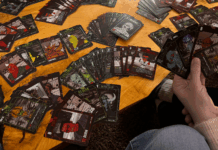Cryptocurrency gets crushed in 2022
To say that the cryptocurrency industry experienced a tough 2022 would be an understatement. Tokens like Terra’s LUNA dropped by over 99% in one week back in May. Decentralized lending platform, Celsius filed for bankruptcy in mid-July. I personally took a hard financial hit from that one and am still unsure if myself or others will see much of their funds recovered. Then came the fall of FTX, one of the largest crypto exchanges in the world filing for bankruptcy in November. This one was a major shock after seeing the FTX founder, Sam Bankman-Fried appear on the cover of multiple major magazines over the past year, with some touting him as the next Warren Buffet.
However, what all of these major problems have in common is that they were all caused by seemingly very poor judgment and reckless decision making by those in charge such as Do Kwon of Luna, Alex Machinsky of Celsius and Sam Bank-Fried of FTX. It seems also that a lot of these issues also had a contagion effect. A lot of them were reliant on one another and thus when one token or platform failed, others became collateral damage creating a contagion effect.
Blockchain as a Technology
That said, the underlying technology of blockchain that allows cryptocurrency, smart contracts and decentralized financial platforms to exist has not changed and continues to grow in adoption. Blockchain refers to a system of digitally recording information on a public ledger that is spread across an entire network of computers. By recording information this way, it makes it nearly impossible to alter that data after it has been recorded given the transparent nature of the public ledger which stores the information. Bitcoin was the first successful use case for blockchain technology. Since 2009, Bitcoin has allowed peer-to-peer financial transactions to take place without the need for a centralized bank, but instead by a network of decentralized computers referred to as “nodes” that run the Bitcoin software. This software protocol can be downloaded by anyone with a computer. Those who run the software are incentivized by receiving Bitcoin, a process referred to as “mining.” However, the computers required to competitively mine Bitcoin have become more sophisticated over time, and with it, the cost and electricity consumption required has also increased.
Ethereum moves to Proof-of-Stake
Ethereum is another blockchain based technology that has allowed for the development of decentralized applications or dapps as well as smart contracts, creating more opportunity beyond just transferring currency between individuals via Bitcoin. Up until recently, Ethereum relied on the same process of mining that Bitcoin used to validate transactions on the network. This process of mining is referred to as “proof-of-work” as it involves a computer solving complex equations using processing power and electricity to do the “work.” However, n September of 2022, Ethereum developers achieved a major milestone by switching their network from proof-of-work to a model called proof-of-stake. Unlike proof-of-work, which relies heavily on electricity to solve equations, proof-of-stake is done through users “staking” Ethereum (ETH) to run a node that uses staked ETH to validate transactions. Think of it like depositing money into a bank to earn interest while the bank then uses that money to lend to others; the simple foundation for how the banking system works. However, with proof-of-stake, you’re essentially depositing the cryptocurrency ETH into a network of computer nodes, which are used to run the Ethereum network. By switching to proof-of-stake, Ethereum has effectively lowered its electrical consumption by over 99% while maintaining the same level of decentralized security and public transparency blockchain technology is able to provide.
What is an NFT?
Beyond the use-case of securely transacting money between two individuals without a centralized bank, such as Bitcoin, what other use-cases are there for blockchain technologies like that of Ethereum? One of the most popular use cases implemented thus far has been that of NFTs. NFT stands for non-fungible token. To understand what a non-fungible token is, first let’s consider what fungible means in terms of currency or assets. A fungible token is defined as a type of asset that is divisible, can be substituted for another of the same asset and is thus not unique. For example, fiat currencies like the US dollar are considered fungible assets in that one dollar is the same in Medina, Minnesota as it is in New York City, New York. Though obviously the amount of goods and services that one dollar can purchase may differ due to the market conditions in the region it is being used, the dollar itself is not unique and can be exchanged freely for another dollar, hence its fungibility.
Early NFT Use Cases
Non-fungible on the other hand is defined as an asset that is unique, not divisible and cannot be readily substituted by another. A non-fungible token (NFT) refers to a unique digital identifier that cannot be copied or substituted and is recorded on a blockchain to certify the authenticity of the NFT and who owns it. Thus, the ownership of this NFT can be freely transferred from one person to another and the underlying value is subjected to the free market. The most prominent example of NFTs being traded is through digital artworks. Up until NFTs were created, anyone could essentially copy an image file or JPEG of artwork or a photograph and claim ownership. Yes, of course there are copyright issues and someone who owns (a copy of) the Mona Lisa is unlikely to believe they could sell it as if it was an original. After all, it would require, among other things, a certificate of authenticity (COA) from a museum or gallery. On the other hand, with an NFT this COA is done through the blockchain itself and thus allows a marketplace for artists to create and trade works of art or other digital goods using, for example, the Ethereum network to ensure authenticity of ownership. This at first may seem to be a very limited use case for digital artists and collectors and/or only be applied to digital goods. However, a very real world asset, like the title to a home could also be represented as an NFT; a scenario that may be frowned upon by a conventional title company (among other institutions) but would likely benefit the buyer and seller through a much more simplified, but still secure, real estate transaction with a digitally verifiable trail of ownership.
Though a title to a home is a use case that is unlikely to be adopted by the mainstream anytime soon, NFTs will likely continue to grow first in the space of digital assets. Beyond artwork, other digital use cases for NFTs include music, event ticketing and digital goods in video games. Digital music turned into an NFT gives artists additional earning potential through a direct royalty payment via the blockchain on a song or album sold or licensed directly to their audience and without a middle-man such a record label or Apple music getting a large cut. Furthermore, NFTs could also act as a single ticket to an event or even as an ongoing membership to a club that has recurring events or additional benefits associated with being a part of that club. Digital media magnate and serial entrepreneur Gary Vaynerchuk (aka Gary Vee) has created an NFT project called “Vee Friends.” Although the NFTs themselves were pictures of various animals with positive character principles that Vaynerchuck came up with, the primary utility from this project is access to a three year annual conference called “Vee Con.” The first was held at US Bank Stadium in May of 2022 where NFT holders were granted access to the event with varying levels of utility based on which NFT(s) they owned. In this case, like in the music example, there was no middleman like Ticketmaster necessary but rather owning a Gary Vee NFT acted as the membership to attend Vee Con in 2022, 2023 and 2024.
As is the case with many NFT projects, whether in the art space or not, the NFT founders through a prewritten smart contract (ie digital code), have the ability to limit how many NFTs are available, thus allowing a free-market exchange based on supply, demand and the perceived utilitarian value that the NFT may provide now or in the future. This turned out to be the case with the Gary Vee NFT project where various holders were buying and selling through an NFT marketplace; the most popular of which is called OpenSea.
Lastly, I should also note that I do have a vested interest in this subject as I’ve personally co-founded an NFT project called the Order of the Egonauts which pays tribute to the heroes of cryptocurrency and blockchain technology. The project intends to provide membership utility to those who own an Egonaut NFT through exclusive blockchain related events held periodically at a separate event venue facility currently proposed to be built in Medina, Minnesota as part of a larger commercial development project, which I am also involved with. I look forward to continuing to write about and give updates on these two separate projects and the space of cryptocurrency in the next issue of LocalTies as progress continues on all fronts.







